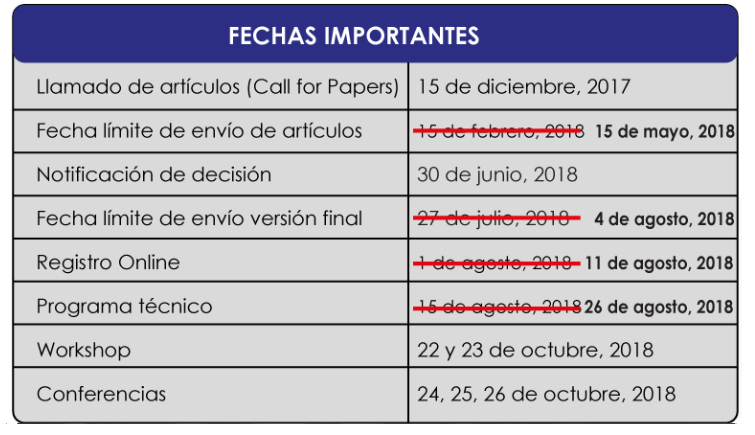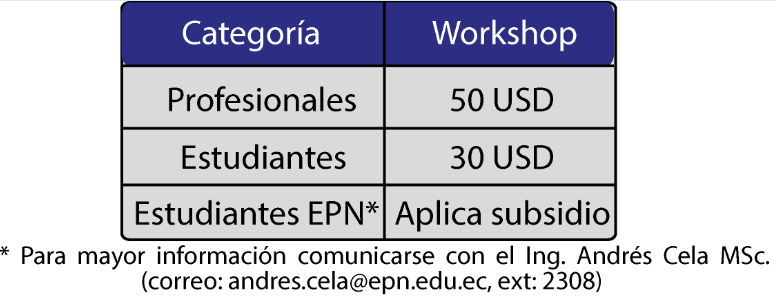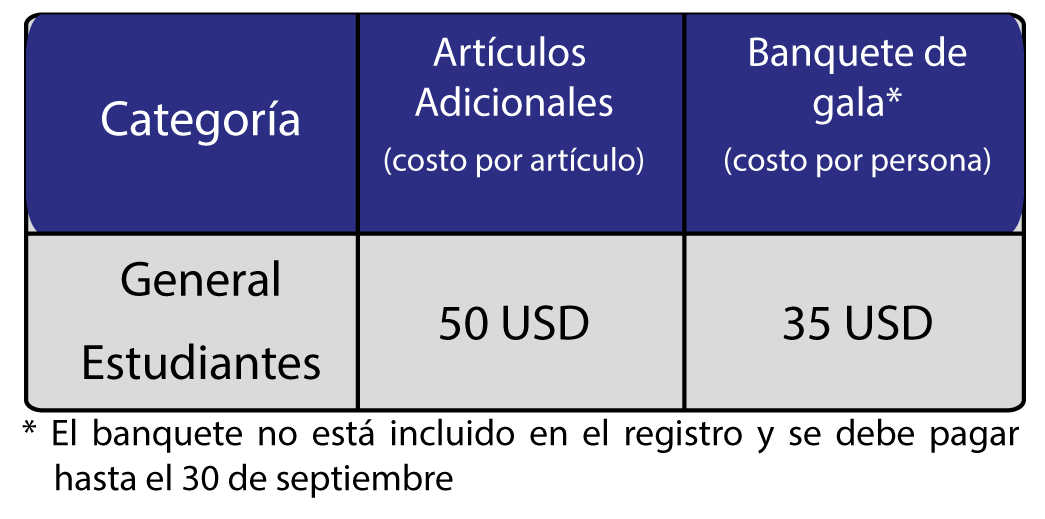LLAMADO DE ARTÍCULOS |
Llamado de Artículos
|
|---|
El CLCA tiene como objetivo principal reunir a la comunidad científica latina que trabaja en control automático y áreas afines y es el mayor encuentro de expertos en donde se presentan contribuciones recientes, tendencias actuales, nuevos desafíos y oportunidades de las herramientas que enmarcan la teoría del control, la automatización y áreas afines. Es además una excelente oportunidad para establecer contacto personal e interactuar con importantes investigadores latinoamericanos. El evento dispondrá de Workshops 22 y 23 de octubre. Y la conferencia del 24 al 26 de Octubre del 2018, en la Escuela Politécnica Nacional en Quito - Ecuador.
Consideraciones:
- Los papers serán incluidos en las memorias de la conferencia que cuenta con ISBN.
- Los mejores artículos científicos (papers) en INGLÉS serán incluidos en la revista Maskay que se encuentra indexada en SciELO y Latindex, y en las revistas Visus y Enfoque.
- Control de procesos
- Sistemas eléctricos de potencia
- Sistemas de control
- Mecatrónica
- Robótica
- Educación para la ingeniería
- A4 paper (210 × 297 mm)
- Margins:
- First page: top 35 mm, bottom 25 mm, left/right 15 mm.
- Other pages: top 25 mm, bottom 25 mm, left/right 15 mm.
- Main text is two columns, with a 5 mm gap between columns.
- No headers, footers, or page numbers.
- Title, with a maximum of 10 words, 14 pt Times boldface.
- Author names, 10 pt Times boldface.
- Author affiliations, 10 pt Times italic.
- An abstract with 50–100 words.
- A list of 5–10 keywords, preferably taken from the official IFAC keyword list.
- Times Roman 10 pt, or equivalent font, unless explicitly stated otherwise.
- All paragraphs must be justified, if possible.
- Single line spacing.
- The first line of a paragraph should not be indented.
- 8 pt additional vertical space between paragraphs.
- Avoid hyphenation at the end of a line.
- Section headings must be centred, in capital letters, and numbered consecutively, starting with 1.
- Sub-section headings should be in capital and lower-case italic letters, numbered 1.1, 1.2, etc, and left justified, with second and subsequent lines indented.
- All tables should be numbered with Arabic numerals.
- Headings should be placed above tables, underlined and centred.
- Leave one line space between the heading and the table.
- All photographs, schemas, graphs and diagrams are to be referred to as figures.
- Lettering and symbols should be clearly defined either in the caption or in a legend provided as part of the figure.
- Figures should be placed at the top or bottom of a column wherever possible, as close as possible to the first reference to them in the paper.
- Figures should be restricted to single-column width unless this would make them illegible.
- The figure number and caption should be typed below the illustration, left justified, with subsequent lines indented.
- Equations should be numbered with Arabic numerals.
- SI units should be used for physical magnitudes. All non-standard abbreviations or symbols must be defined when first mentioned, or a glossary provided.
- In the text the surname of the author and the year of publication of the reference should be given.
- Two or more references by the same authors published in the same year should be differentiated by letters a,b,c etc.
- For references with more than two authors, text citations should be shortened to the first name followed by et al.
- Only essential references, which are directly referred to in the text, should be included in the reference list.
- References must be listed in alphabetical order at the end of the paper. References to the same author(s) should be in chronological order.
- Journal references should include:
- author’s surname and initials;
- initials and surnames of remaining authors;
- year of publication (in brackets);
- article title (where provided);
- abbreviated journal title (in italics);
- volume number and page numbers.
- References to books should include:
- author’s surname and initials;
- initials and surnames of remaining authors;
- year of publication (in brackets);
- book title (in italics);
- name of the publisher and place of publication.
- References to multi-author works should include after the year of publication:
- chapter title (where provided);
- "In:" followed by book title (in italics);
- initials and name(s) of editors(s) in brackets;
- volume number and pages;
- name of the publisher and place of publication.
Las áreas de investigación de CLCA 2018 son:

|
Presentación de Artículos:
Los artículos (papers) puede ser escritos en inglés o español*, y están limitados a un máximo de 6 páginas (en formato estándar IFAC conferencia de doble columna), incluyendo figuras, tablas y referencias. Además se hace la invitación de enviar contenido adicional como videos o fotografías de alta calidad que sirvan para presentar los resultados obtenidos.
Las especificaciones completas se encuentran en el siguiente enlace: Guía de Autor ↓ Diseño y Estilo del Artículo (English)Paper length and file sizeThe length of regular papers is limited to 6 pages. All the rules are on this web site: Authors Guide. PDF files will be limited to 2 MB in size. Page size and marginsTitle pageThe title page must contain the following items, centred on the page with a left and right margin of 30 mm (i.e. a maximum width of 150 mm): The abstract and keywords should be separated from the previous and following text by a pair of full width (150 mm) horizontal lines and an 8 pt vertical space. Text formatSection headingsTablesIllustrationsEquationsReferencesPara enviar su artículo siga el siguiente enlace: Envío de Artículo |
 |
Registro:

Costos Workshops:

Costos Adicionales:

Nota: Los precios no consideran gastos administrativos por pagos internacionales.
Todos los autores tiene que realizar la confirmación de pago hasta el 30 de septiembre.
Tweet






